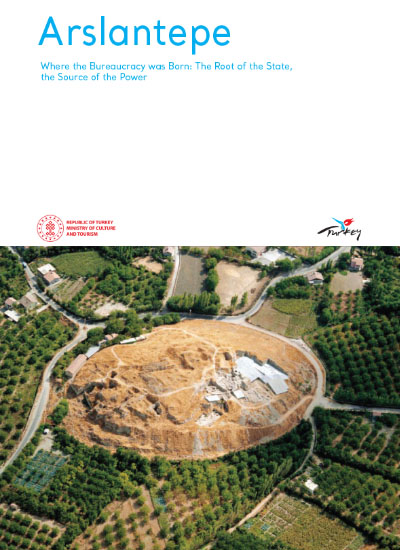Arslantepe Mound is located in Orduzu, 7 kilometres northeast of Malatya, east of the Euphrates River. The mound covers an area of 4.5 hectares and stands 30 metres high. Inhabited from 5000 BC until the 11th century AD, during the Hittite Empire in 2000 BC, the city was known as Melidia (Meliddu, Melita, Maldia). Arslantepe served as a Roman village between the 5th and 6th centuries AD and as a necropolis during the Byzantine Period. The region's water resources and suitability for agriculture, as well as its location outside the flood zone of the Euphrates River, contributed to its continuous inhabitation until the Byzantine period. Arslantepe is significant in the history of Eastern Anatolian civilizations due to its uninterrupted settlement from the Late Chalcolithic Age to the Islamic Age. Excavations at Arslantepe began in the 1930s. The wall reliefs discovered during the first period of excavations at Arslantepe include two lions and a statue of King Tarhunza. Due to the lack of a museum in Malatya at that time, these artifacts were taken to the Museum of Anatolian Civilisations in Ankara, where they are still on display. Currently, a team from various countries and Turkey is continuing excavations at Arslantepe, and the finds from the site are exhibited at the Malatya Archaeological Museum. Excavations at the mound revealed a mud-brick palace dating back to 3300-3000 BC, a temple dating back to 3600-3500 BC, over two thousand seal impressions, and metal artefacts. The findings suggest that Arslantepe was a significant official, religious, and cultural centre where the aristocracy originated, and the first form of state emerged. The large building group with monumental mudbrick structures is believed to be a palace due to its multi-purpose layout. The palace corridor walls feature printed motifs and wall paintings. The presence of numerous seal impressions throughout the building indicates a high level of administrative activity and the employment of many officials. The findings provide evidence of the emergence of a state system with established political and religious institutions, in which all activities were centralised, an efficient sealing system was used for recording purposes and a bureaucracy gradually developed. The palace complex yielded arsenic-copper alloyed weapons, silver-inlaid swords and daggers, high pedestal fruit bowls, and Mesopotamian-type tall vases. Next to the palace, an important person's grave dating back to 2900 BC was discovered. The grave contained rich gifts and the stone lid covering it had four sacrificed young human bodies, indicating that it was a king's grave. Arslantepe Mound, the oldest city-state in Anatolia, was added to the provisional list of the UNESCO World Cultural Heritage List in 2014 and was inscribed on the UNESCO World Heritage List in 2021.
ARSLANTEPE ARCHAEOLOGICAL SITE


